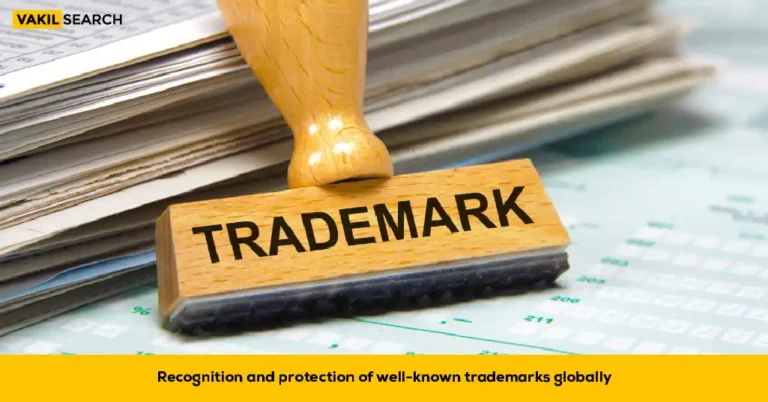Navigate the intersection of trademarks and indigenous rights with sensitivity. Explore the complexities, challenges, and best practices for respecting indigenous intellectual property rights in trademark matters.
The intersection of trademarks and indigenous rights presents a complex and sensitive landscape that requires careful navigation and consideration. Trademarks serve as valuable assets for businesses, providing legal protection for brands and distinguishing their products or services from those of competitors. However, the use of indigenous names, symbols, or cultural elements as trademarks raises important ethical, cultural, and legal questions regarding intellectual property rights and the rights of indigenous communities.
The Importance of Indigenous Cultural Heritage
Indigenous cultural heritage encompasses a rich tapestry of traditions, knowledge, languages, and symbols that are deeply intertwined with the identities, histories, and spiritual beliefs of indigenous peoples around the world. For indigenous communities, cultural heritage is not merely a commodity but a sacred and ancestral legacy that must be respected, preserved, and protected for future generations.
Symbols and cultural expressions such as traditional designs, patterns, motifs, songs, dances, and sacred objects hold profound cultural significance and embody the collective wisdom, values, and spirituality of indigenous cultures. These cultural expressions are not merely aesthetic adornments but embodiments of indigenous identity, sovereignty, and self-determination.
Trademark Use and Indigenous Cultural Appropriation
The commercialization and appropriation of indigenous cultural symbols and expressions as trademarks raise concerns about cultural exploitation, misrepresentation, and commodification. The use of indigenous names, imagery, or motifs as trademarks without the consent or involvement of indigenous communities can perpetuate harmful stereotypes, dilute cultural meanings, and erode indigenous cultural integrity.
Instances of cultural appropriation in trademarks include the use of indigenous names, symbols, or imagery in branding products or services unrelated to indigenous cultures, such as fashion, sports teams, and commercial products. These appropriations often disregard the spiritual, historical, and cultural significance of indigenous symbols and exploit them for commercial gain, leading to cultural commodification and distortion.
Legal Frameworks and Indigenous Rights
International human rights instruments, such as the United Nations Declaration on the Rights of Indigenous Peoples (UNDRIP), recognize the collective rights of indigenous peoples to protect, control, and preserve their cultural heritage, including their intellectual property rights. Article 31 of UNDRIP affirms the right of indigenous peoples to maintain, control, protect, and develop their cultural heritage, traditional knowledge, and traditional cultural expressions.
Domestic legal frameworks, such as intellectual property laws and trademark regulations, vary in their recognition and protection of indigenous rights. Some jurisdictions have implemented provisions to protect indigenous cultural heritage and traditional knowledge, including the registration of geographical indications, collective trademarks, or sui generis systems for indigenous intellectual property rights.
Navigating Trademark Issues and Indigenous Rights
Respecting indigenous rights and cultural heritage requires a nuanced and inclusive approach to trademark use and intellectual property rights. Key considerations for navigating trademark issues and indigenous rights include:
- Community Consultation: Engage in meaningful consultation and collaboration with indigenous communities to seek their input, consent, and participation in trademark-related decisions that may affect their cultural heritage.
- Cultural Sensitivity: Exercise cultural sensitivity and respect for indigenous cultural protocols, traditions, and spiritual beliefs when using indigenous names, symbols, or imagery in trademarks. Avoid appropriating or commodifying indigenous cultural expressions for commercial purposes without the consent of indigenous communities.
- Benefit Sharing: Explore mechanisms for equitable benefit sharing and fair compensation with indigenous communities for the use of their cultural heritage in trademarks, recognizing the cultural and economic value of indigenous knowledge and expressions.
- Legal Protections: Advocate for legal frameworks and policies that recognize and protect indigenous intellectual property rights, including the development of sui generis systems or collective trademark mechanisms tailored to indigenous cultural heritage.
- Education and Awareness: Raise awareness among businesses, consumers, and policymakers about the importance of respecting indigenous rights and cultural heritage in trademark use. Promote ethical guidelines, best practices, and cultural competency training to foster greater understanding and appreciation of indigenous cultures.
Conclusion
Trademark use and indigenous rights intersect in complex and nuanced ways, requiring careful consideration, dialogue, and collaboration to ensure respect for indigenous cultural heritage and intellectual property rights. By embracing principles of cultural sensitivity, community consultation, and equitable benefit sharing, businesses can navigate trademark issues in a manner that upholds indigenous rights, fosters cultural diversity, and promotes ethical business practices.
FAQs: Trademarks and Indigenous Rights
What is the relationship between trademarks and Indigenous rights?
The relationship between trademarks and Indigenous rights intersects in cases where trademarks incorporate Indigenous cultural symbols, names, or imagery, raising concerns about cultural appropriation, misrepresentation, and infringement of Indigenous intellectual property rights.
Why is the issue of trademarks and Indigenous rights considered sensitive terrain?
The issue is considered sensitive because it involves the protection of Indigenous cultural heritage, knowledge, and identity, which may be exploited or commodified without proper acknowledgment, consent, or benefit to Indigenous communities, leading to tensions and conflicts between trademark owners and Indigenous stakeholders.
What are some examples of trademarks that have raised concerns among Indigenous communities?
How do Indigenous communities assert their rights in relation to trademarks?
Indigenous communities assert their rights through legal actions, advocacy efforts, and engagement with trademark owners, government agencies, and international organizations to protect and promote their cultural heritage, traditional knowledge, and intellectual property rights.
What legal frameworks exist to protect Indigenous rights in relation to trademarks?
Legal frameworks include domestic laws recognizing Indigenous rights to cultural heritage and intellectual property, international instruments such as the United Nations Declaration on the Rights of Indigenous Peoples (UNDRIP), and specific provisions in trademark laws addressing Indigenous cultural appropriation and misrepresentation.
How can trademark owners and businesses respect Indigenous rights in their branding and marketing?
Trademark owners and businesses can respect Indigenous rights by consulting with Indigenous communities and obtaining their consent and input when using Indigenous names, symbols, or imagery in their trademarks, ensuring fair and equitable partnerships and benefit-sharing arrangements, and avoiding cultural stereotypes or misappropriation.
What role do trademark offices and intellectual property agencies play in addressing concerns related to trademarks and Indigenous rights?
Trademark offices and intellectual property agencies can play a role in addressing concerns by developing guidelines and policies for reviewing trademark applications involving Indigenous cultural symbols or names, providing mechanisms for Indigenous consultation and participation in trademark examination processes, and facilitating dispute resolution and mediation between trademark owners and Indigenous stakeholders.
How can collaborative approaches between trademark owners and Indigenous communities foster mutual respect and understanding?
Collaborative approaches involve building partnerships and relationships based on mutual respect, trust, and recognition of Indigenous rights and perspectives, engaging in meaningful dialogue and consultation with Indigenous communities, and co-creating solutions that balance cultural preservation with economic development and innovation.
What are some best practices for trademark owners to navigate the intersection of trademarks and Indigenous rights sensitively and responsibly?
Best practices include conducting thorough research and due diligence to understand the cultural significance and context of Indigenous symbols or names, seeking informed consent and input from Indigenous communities, acknowledging and respecting Indigenous intellectual property rights, and fostering long-term relationships based on trust and collaboration.
How can broader awareness and education about trademarks and Indigenous rights contribute to positive outcomes for all stakeholders?
Broader awareness and education can promote understanding and respect for Indigenous cultural heritage and intellectual property rights, raise awareness about the potential impacts of trademark use on Indigenous communities, and foster dialogue and cooperation among stakeholders to develop inclusive and equitable approaches to trademark protection and cultural preservation.










